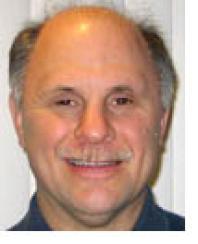
Oh sure, Blackstone founders Peter G. Peterson made $1.8 billion and Stephen A. Schwarzman made $700 million in their 2007 IPO.
Noah Gottesman and Pierre LaGrange, who founded GLG in 1995 (along with Jonathan Green, who subsequently left the firm), each received about $970 million in their reverse acquisition, including a $270 million cash payment, $150 million representing earnings for the year, and 59 million shares of the company valued at the time at $9.35 per share.
And Dan Och of Och-Ziff Capital Management Group at the time was poised to make at least $1.5 billion over the ensuing five years when his firm went public in 2007. Now, it looks like the rest of the investment world may actually make a buck or two on these stocks as well. Provided, of course, they did not buy the stocks at the IPO price.
Shares of Och-Ziff are up about 150 percent from a year ago, to $17.90. And at least one Wall Street pro thinks the stock could go much higher. Last week, Chicago-based William Blair & Co., upgraded the shares of Och-Ziff to Outperform, its highest rating, calling Och-Ziff “a high-quality alternative manager positioned to emerge even stronger during the continued market recovery.”
“Not all alternative managers are created equal,” says Mark Lane, who follows asset management firms for William Blair. It is also the only alternative asset management company he follows that has his highest rating. Remember, investors buy shares of the advisory firm and the analysts are most concerned about the likelihood and reliability of future fee income.
So, by these standards, Lane calls Och-Ziff the most transparent firm among the group. He points to its policy of reporting assets and performance every month, which it is not required to do. In fact, right on schedule, last Monday Och-Ziff disclosed in a regulatory filing that OZ Master Fund, its largest, us up 2.65 percent so far this year and that its other three funds are up between 3.68 percent and 5.23 percent. It also said assets under management climbed $700 million, to $25.3 billion.
Lane also likes the fact that all of its funds have exceeded their high water mark, so there is more visibility for future incentive fee growth — the key to owning these stocks — noting that the main fund easily rebounded in 2009 from its nearly 16 percent decline in 2008. Firm-wide AUM is also up from the end of 2008. “Och Ziff did not blow up in 2008, it did not put up gates and it has seen a flow of funds,” Lane stresses. Still, shares of Och-Ziff are well below their $32 IPO price when it went public in November 2007.
By contrast, GLG Partners, which manages hedge funds and long-only funds, is still trading around $3, just off its low of $2.26. And, although net firm-wide AUM has surged to more than $22 billion from $15 billion, net alternative strategy AUM — which are the source of the hefty performance fees — actually fell from $11 billion to $10.5 billion. These funds include all alternative strategy funds, all 130/30 strategy funds and all managed accounts managed in accordance with alternative and 130/30 strategies. In addition, a big chunk of its hedge funds assets are still under water, so they won’t be earning performance fees for awhile.
Fortress, mostly a hybrid between hedge funds and private equity funds, is trading around $4.37, nearly double its depressed price a year ago. Of course, it went public in 2007 at $18.50 per share. Blackstone, which is mostly a private equity firm, also has doubled, to $14.49 or so, but less than half its $31 IPO price.
However, Lane says these companies do not offer the same level of transparency as Och-Ziff since they rely heavily on the private equity business, which is still going through a tough environment for capital commitments. He says they lack fee and earnings visibility for now.
He is especially puzzled by Fortress’ recent announcement to acquire Logan Circle Partners, L.P., a fixed income asset manager with about $12 billion in assets under management, from Guggenheim Partners, LLC. Lane says this deal is a negative since it diversifies the firm away from the more lucrative alternative investment business. Lane calls Blackstone “a great firm” that will be able to raise money as the private equity business comes back. But, he says it has a lack of transparency versus Och-Ziff.
There are two additional ways for investors to play the alternative investment business. Last November, Ramius merged with investment bank Cowen Group in a “reverse merger,” same way GLG went public earlier. Ramius manages a little more than $5 billion in hedge funds, fund of funds and real estate. However, on a pro forma basis, half of Cowen’s revenue came from its brokerage business. And all of Ramius’ funds lagged the market last year.
Perhaps the most intriguing play is Icahn Icahn Enterprises LP, a Big Board traded master limited partnership of which corporate raider Carl Icahn owns 93 percent. It has seven key business segments: Investment Management — the hedgefund business — Automotive, Metals, Real Estate, Home Fashion, Railcar and Food/Packaging.
Lane doesn’t follow the stock. But, investors seem to like it. The stock is trading around $45.92, but down from its all-time high of about $130. Amazingly, while many investors like to follow the exploits of Icahn, no analyst follows his stock.
Stephen Taub, who has covered the hedge fund industry for 30 years, is a contributing editor to Institutional Investor and Absolute Return-Alpha magazines and former editor of Financial World magazine.







